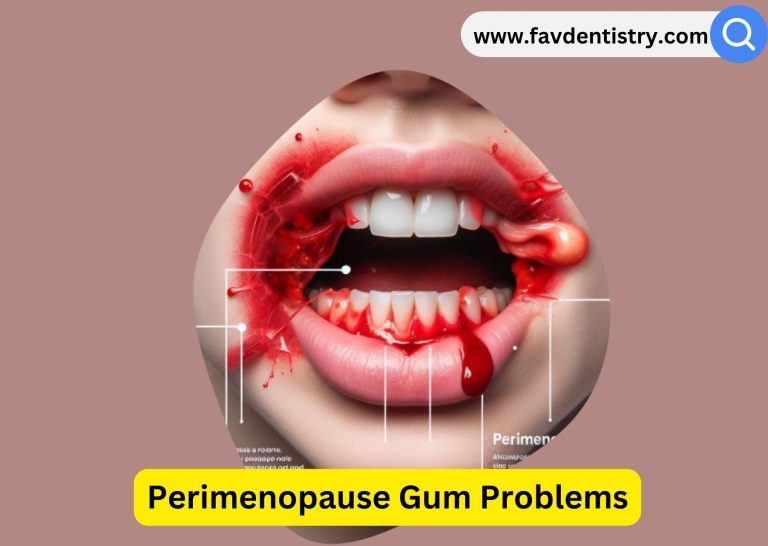Extra Tooth Growing in Back of Mouth: Causes, Symptoms, and Treatment
Last Updated on 6 months by DR. ALBIN SIPES
An extra tooth growing in the back of your mouth is known as a supernumerary tooth. It is a common dental condition that can cause discomfort and dental complications if not addressed.
We will explore the causes, symptoms, and treatment options for an extra tooth growing in the back of the mouth. We will also discuss the potential impact on oral health and the importance of seeking professional dental care to address this issue.
Understanding the implications of a supernumerary tooth is crucial for maintaining optimal oral health and preventing potential complications in the future. Whether you’re experiencing discomfort or simply seeking information on this topic, this article aims to provide comprehensive insights into managing this dental condition effectively.
The Phenomenon Explained
An extra tooth growing in the back of the mouth is a rare dental phenomenon that occurs when additional teeth develop beyond the regular set of 32 adult teeth. The presence of these supernumerary teeth can lead to various dental issues and discomfort.
Defined as hyperdontia, the prevalence of an extra tooth is estimated to be approximately 2% of the population. Typically, the condition is more common in permanent teeth than in primary teeth. It can occur anywhere in the mouth, but it is often found in the upper incisor area.
Understanding the basics of dental anatomy is crucial to grasp the occurrence of an extra tooth. Teeth are classified into different categories based on their functions, shapes, and positions. In the case of supernumerary teeth, they may appear in various forms, such as conical, tuberculate, and supplemental.
Identifying an extra tooth usually involves dental imaging techniques such as X-rays. This helps in determining the location, size, and orientation of the supernumerary tooth. Once identified, dental professionals can devise appropriate treatment plans to address the potential complications associated with the presence of an extra tooth.

Credit: www.healthline.com
Causes Behind Extra Tooth Emergence
Extra Tooth Emergence: Genetic factors in dental anomalies play a significant role in the occurrence of hyperdontia. Certain individuals may inherit genetic mutations that affect tooth development, resulting in the emergence of extra teeth. Environmental influences on dentition such as trauma or infections can also contribute to the development of additional teeth. Additionally, rare disorders like Gardner’s syndrome or Cleidocranial dysplasia can lead to hyperdontia. These conditions can cause a surplus of teeth to grow in various regions of the mouth, including the back. Understanding the underlying causes of hyperdontia can help in diagnosing and managing this dental anomaly effectively.
Physical Indicators
Having an extra tooth growing in the back of your mouth can lead to various physical indicators. Individuals may experience discomfort or pain in the jaw, particularly around the area where the extra tooth is emerging. Additionally, the presence of an extra tooth can cause crowding and misalignment of other teeth, leading to potential oral health issues. Moreover, individuals with an additional tooth may encounter difficulty in chewing or biting, which can impact their overall eating experience and oral health.
Visual Signs
Extra tooth growth in the back of the mouth can manifest in a few visual signs. One noticeable sign is the presence of extra tooth or teeth, which can cause discomfort and require dental attention. Furthermore, individuals may also experience gaps or spacing issues in teeth, which can be indicative of the presence of extra teeth. Additionally, asymmetry in the dental arrangement can also be a visual sign of the presence of an extra tooth. Overall, being aware of these visual signs can help individuals identify and address any potential issues related to extra tooth growth in the back of the mouth.
Diagnosing The Condition
Diagnosing the Condition: If you have an extra tooth growing in the back of your mouth, the diagnosis starts with a dental examination. The dentist will conduct an assessment, and may use x-rays and dental imaging techniques to get a clear view of the affected area. In some cases, consulting with a dental specialist may be necessary for a more detailed evaluation and comprehensive treatment plan. The process involves careful examination and analysis to determine the best course of action for addressing the extra tooth and its impact on your overall oral health.
Minor Surgical Procedures
An extra tooth growing in the back of the mouth can require minor surgical procedures for treatment. In some cases, tooth extraction becomes necessary to alleviate discomfort and prevent further dental issues. The recovery process post-extraction generally involves following specific aftercare instructions provided by the dentist. Although surgical intervention can be beneficial, it’s important to be aware of the potential risks involved, such as infection or prolonged discomfort. Patients should consult with their dentist to fully understand the procedure and its potential outcome.
Orthodontic Approaches
An extra tooth growing in the back of the mouth can lead to misalignment issues, which may require orthodontic approaches to correct. Braces are commonly used to address teeth misalignment, gradually moving the affected teeth into the desired position. In cases where there is insufficient space for the extra tooth, space maintainers can be utilized to maintain the necessary dental spacing. It’s important to consider the implications of realignment on overall oral health. Realignment procedures must be carefully planned and executed to ensure the health and stability of the entire oral structure.
Advanced Dental Treatments
When it comes to advanced dental treatments, there are several innovative options available to address various dental concerns. Dental implants and bridges offer effective solutions for replacing missing teeth, restoring functionality and enhancing aesthetics. Additionally, bone grafting can provide necessary support for implant procedures, enabling successful outcomes for patients requiring dental implants. Innovations in corrective dentistry continue to improve treatment options, allowing for customized solutions tailored to individual patient needs.
Pain Management And Relief
When dealing with an extra tooth growing in the back of the mouth, pain management is a crucial aspect of relief. Over-the-counter medications such as ibuprofen or acetaminophen can help alleviate discomfort. Additionally, home remedies like applying ice packs or rinsing with salt water can be effective in reducing pain and swelling. It is important to consult a dental professional if the pain persists or worsens, as they can provide tailored treatment options to address the underlying cause.
Preventive Measures
Regular dental check-ups are essential for early detection and management of extra teeth. Monitoring the growth and alignment of teeth can help prevent potential issues. Dietary considerations play a crucial role in maintaining dental health. It is important to limit sugary and acidic foods and drinks, and increase intake of calcium-rich foods. Additionally, adopting proper oral hygiene practices can prevent complications associated with an extra tooth. Brushing and flossing regularly, using fluoridated toothpaste, and rinsing with mouthwash can aid in maintaining oral health. By taking these preventive measures, individuals can minimize the risk of complications and ensure optimal dental well-being.
Monitoring Dental Health Post-treatment
After receiving treatment for an extra tooth growing at the back of the mouth, it is crucial to have a regular follow-up schedule with your dentist to monitor your dental health. In the post-treatment phase, detecting any signs of potential recurrence is essential for maintaining long-term dental health. Your dentist can advise on long-term dental health tips to ensure your continued well-being and to prevent any complications from arising.
Conclusion
Finding an extra tooth growing in the back of your mouth can be a surprising discovery. It’s crucial to seek professional dental guidance to address this issue promptly. By understanding the causes and treatment options, you can take proactive steps to ensure your oral health and prevent potential complications in the future.


